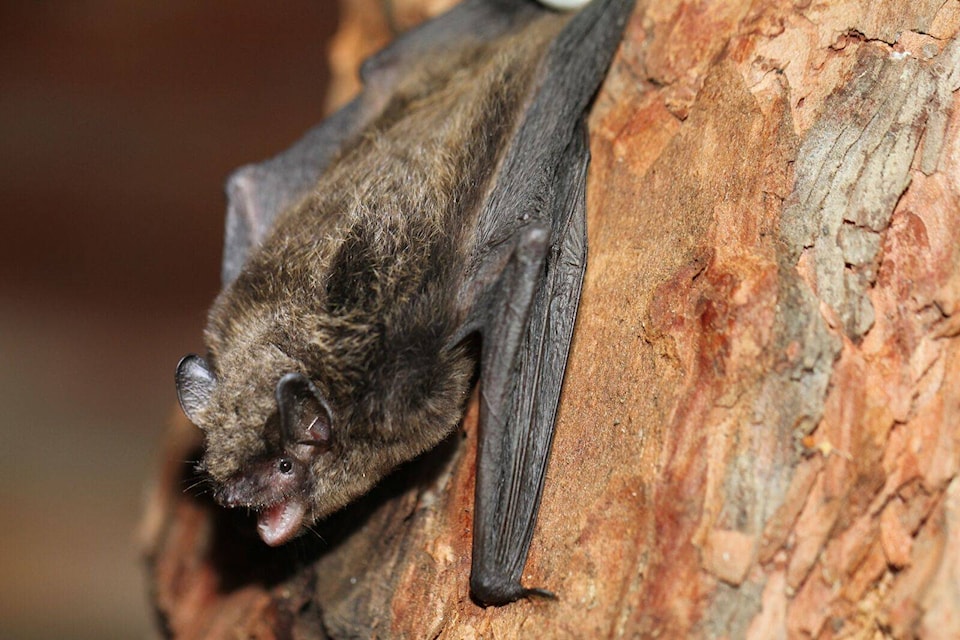Central Alberta’s bat population could use a little love — before it’s too late.
Despite ridding our region of countless nocturnal insects every year and helping maintaining a healthy ecosystem, these flying mammals are often associated with rabies and the vampire myth.
But Alberta’s nine species of bats — all insect-eaters — are now in need of more human consideration.
Red Deer-area naturalist Myrna Pearman said they are in danger of a new disease that’s been decimating bats across the U.S. and Eastern Canada.
The deadly fungus white-nose syndrome will be among the topics discussed at a forum at the Kerry Wood Nature Centre in Red Deer on Thursday, March 23. Our Backyard Bats and the Emerging Role of Community-Led Conservation will be led by biologist Cory Olson, of Edmonton, co-ordinator of the Alberta Bat Program.
Pearman, a Red Deer River Naturalists member, has invited Olson to speak because it’s a crucial time for the local bat population. Since the deadly fungus was first detected around the muzzles and wings of hibernating bats in 2006 in New York State, it’s killed millions of the creatures, rapidly spreading to 29 U.S. states and 5 Canadian provinces — from Ontario to P.E.I.
Last year, the fungus was confirmed in a little brown bat Washington State — and Pearman is concerned it will soon spread to Alberta.
There’s no treatment for the disease that’s reduced some bat species by 90 per cent within five years. The fungus apparently wakes bats up during the winter while they are hibernating, “and they starve to death,” added Pearman.
Humans can help by reporting where bats are roosting, taking photos of their homes, and collecting small specimens of bat guano. The dried bat poop can help experts identify and learn more about various species said Olson.
He hopes the Central Albertans who send in information (see www.albertabats.ca) will eventually count bats in these roosts a few times a year, helping experts to gauge how their numbers fluctuate.
Although rarely seen, nocturnal bats are among the most common Alberta wildlife, with many living in our own backyards, said Pearman, who hopes people will assist with this conservation effort.
While Alberta bats are not bloodsuckers, they do rarely carry rabies, so people should avoid touching them, she added.
The 7:30 p.m. forum is free. Everyone is welcome.
lmichelin@www.reddeeradvocate.com
